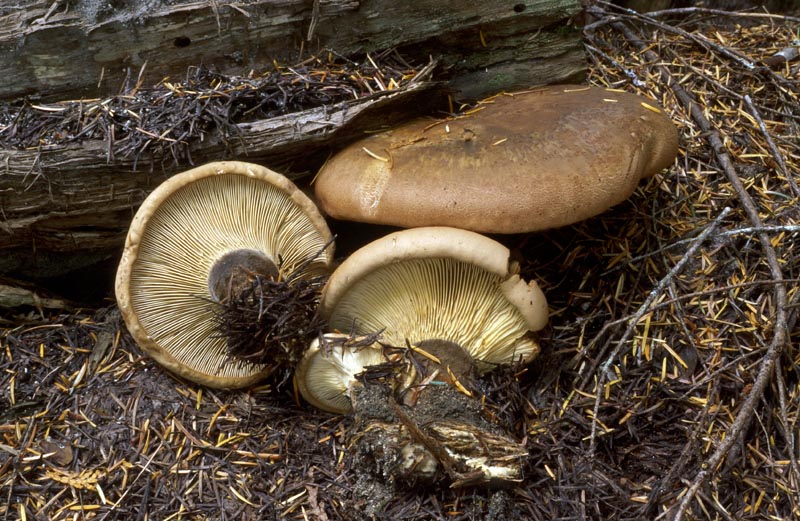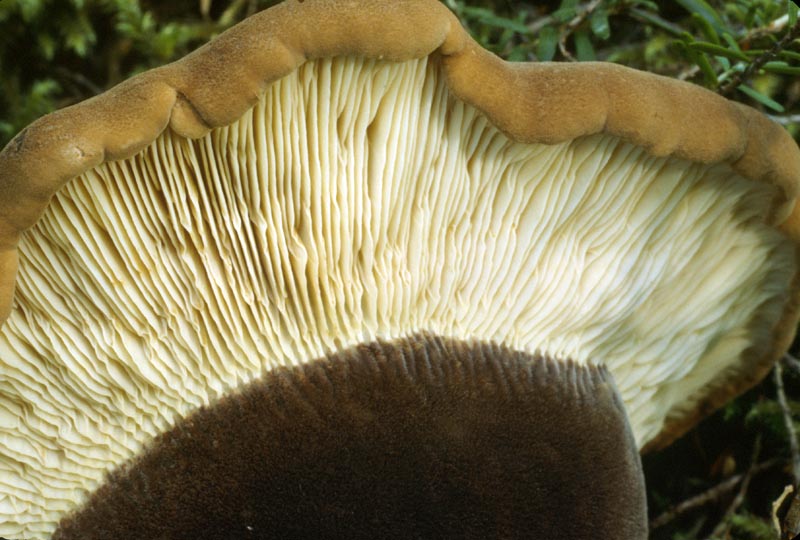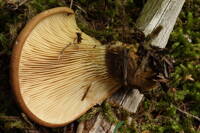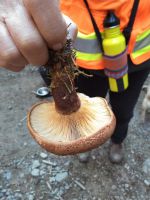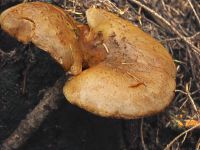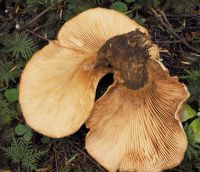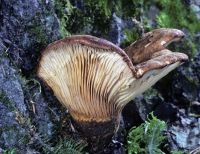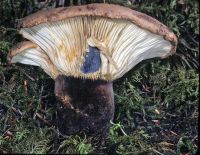Habitat: Grows from rotting conifer stumps, snags, and logs
Conservation Status: Not of concern
The cap is dark brown and velvety when young, becomes paler and smoother in age, and can be quite large. The stipe is thick, rather short, off center or laterally attached, and has a velvety dark brown to blackish brown surface. The gills are cream to yellowish to brownish yellow, stain brownish in age, and often are forked or form pores near the stipe. The flesh is yellowish and has an acrid taste. T. atrotomentosa is common in our region. It first appears during early summer if we have sufficient rain and persists through fall. Also occurring in the PNW is T. panuoides (Fries: Fries) Gilbertson, a pleurotoid species that grows on conifer logs, wood chips, and rich accumulations of humus.
PNW Herbaria: Specimen records of Tapinella atrotomentosa in the Consortium of Pacific Northwest Herbaria database
CalPhotos: Tapinella atrotomentosa photos

